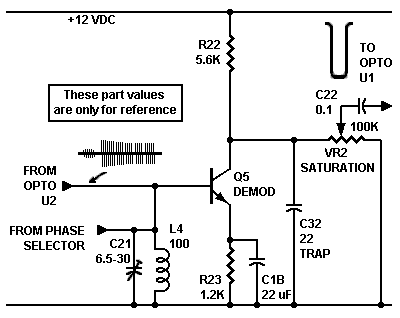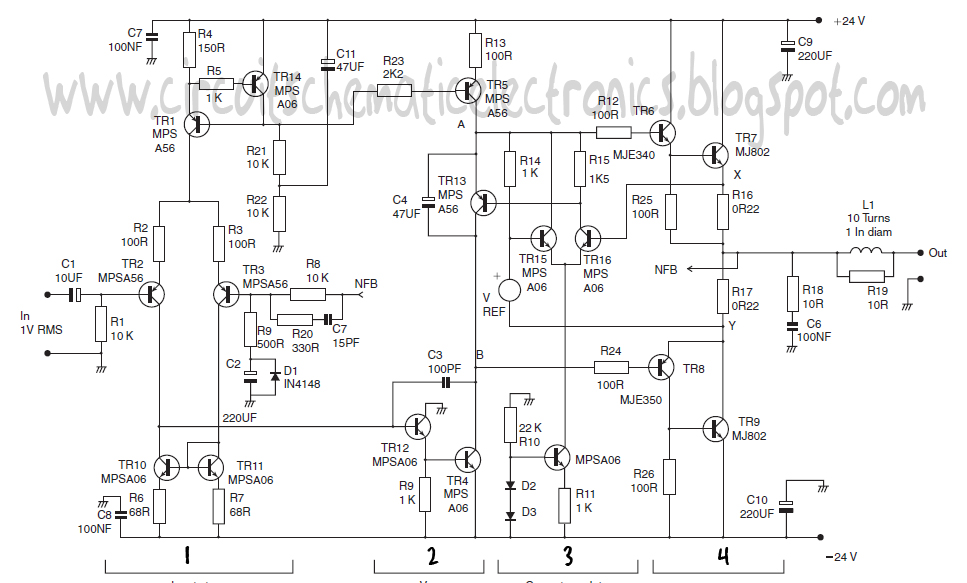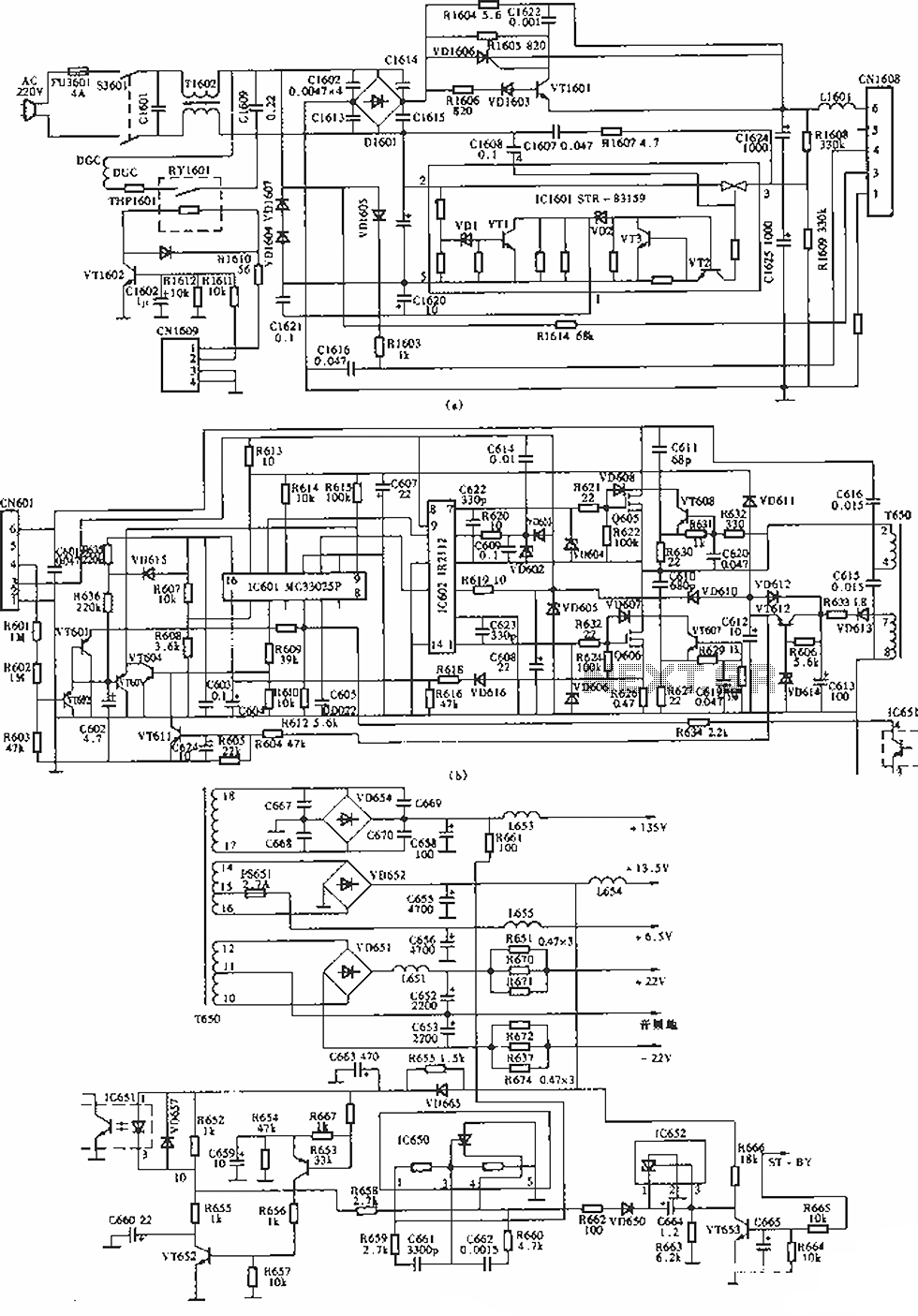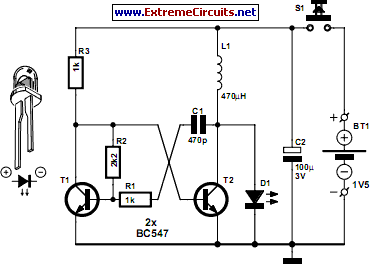
White LED Lights Circuit
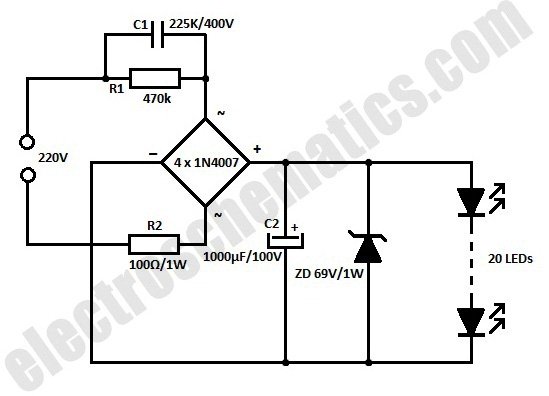
This white LED floodlight illuminates your porch with cool white light. The circuit features a simple and energy-saving design, with a low current consumption.
The LED floodlight circuit typically consists of a power supply, a control circuit, and the LED array itself. The power supply can be either an AC to DC converter or a direct DC power source, depending on the application. For a standard LED floodlight, a switching power supply is often used to efficiently convert the input voltage to the required operating voltage for the LEDs.
The control circuit is responsible for regulating the current flowing through the LED array to ensure optimal brightness and longevity of the LEDs. This may include components such as resistors, capacitors, and sometimes a microcontroller for more advanced features like dimming or color temperature adjustment.
The LED array is composed of multiple white LEDs arranged in a manner that provides uniform illumination across the desired area. The use of a heat sink is crucial in this design, as it dissipates heat generated by the LEDs during operation, thereby preventing thermal runaway and prolonging the lifespan of the floodlight.
Overall, the simplicity of the circuit design contributes to the energy efficiency of the floodlight, making it an ideal choice for outdoor lighting applications. The cool white light emitted by the LEDs enhances visibility while providing a modern aesthetic to outdoor spaces.This white LED flood lights illuminates your porch with cool white light. The circuit is too simple and energy saving design. Its current consumption is pr.. 🔗 External reference
The LED floodlight circuit typically consists of a power supply, a control circuit, and the LED array itself. The power supply can be either an AC to DC converter or a direct DC power source, depending on the application. For a standard LED floodlight, a switching power supply is often used to efficiently convert the input voltage to the required operating voltage for the LEDs.
The control circuit is responsible for regulating the current flowing through the LED array to ensure optimal brightness and longevity of the LEDs. This may include components such as resistors, capacitors, and sometimes a microcontroller for more advanced features like dimming or color temperature adjustment.
The LED array is composed of multiple white LEDs arranged in a manner that provides uniform illumination across the desired area. The use of a heat sink is crucial in this design, as it dissipates heat generated by the LEDs during operation, thereby preventing thermal runaway and prolonging the lifespan of the floodlight.
Overall, the simplicity of the circuit design contributes to the energy efficiency of the floodlight, making it an ideal choice for outdoor lighting applications. The cool white light emitted by the LEDs enhances visibility while providing a modern aesthetic to outdoor spaces.This white LED flood lights illuminates your porch with cool white light. The circuit is too simple and energy saving design. Its current consumption is pr.. 🔗 External reference

